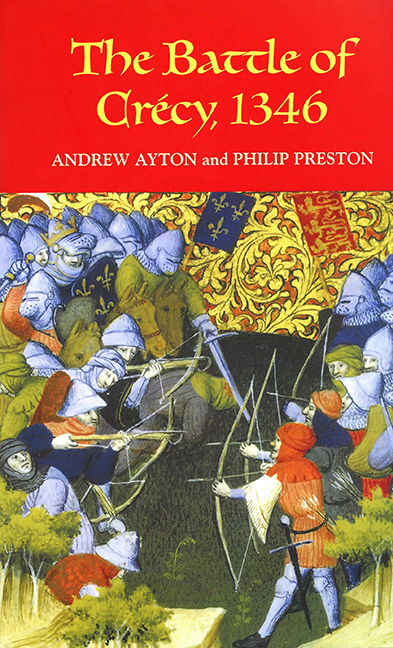Book contents
- Frontmatter
- Contents
- List of Illustrations
- Preface and Acknowledgements
- Abbreviations
- Dedication
- Introduction
- The Campaign
- The Battle
- The English
- The French
- Sources and Problems of Interpretation
- 9 Crécy and the Chroniclers
- 10 Topography and Archery: Further Reflections on the Battle of Crécy
- Index
- Miscellaneous Endmatter
10 - Topography and Archery: Further Reflections on the Battle of Crécy
from Sources and Problems of Interpretation
Published online by Cambridge University Press: 25 October 2017
- Frontmatter
- Contents
- List of Illustrations
- Preface and Acknowledgements
- Abbreviations
- Dedication
- Introduction
- The Campaign
- The Battle
- The English
- The French
- Sources and Problems of Interpretation
- 9 Crécy and the Chroniclers
- 10 Topography and Archery: Further Reflections on the Battle of Crécy
- Index
- Miscellaneous Endmatter
Summary
Given the problems that are attendant upon reconstructing the battle of Crécy from the narrative sources, it is small wonder that there has been so much inconclusive debate about the battle. In particular, no consensus has emerged concerning English tactical deployment, the role played by archery and the combat relationship between the archers and the men-at-arms in Edward III's army. Yet these appear to be precisely the issues that are central to an understanding of how the English brought off their remarkable victory in a battle in which so many of the aristocracy of the greatest military power in Europe were lost at the expense of so very few of her adversary. Consequently, we cannot simply sidestep these issues in the concluding part of this book. But if the chronicles deny us a clear picture of how the English army, and the archer contingent in particular, were disposed, how are we to understand and explain the English victory at Crécy? One approach would be to acknowledge and accept the limitations, even distractions, of the chroniclers’ terms, and to approach the problem from a different direction, making more explicit use of evidence concerning the armies of the protagonists and the distinctive topography of the ‘traditional’ battlefield. With regard to the role of the archers – the crucial issue – we must consider how the strengths and limitations of these potent, mobile missile troops, having played a major part in the choice of battleground, would have dictated their deployment and the way they fought on the chosen site. This is not to turn one's back on the chroniclers, but to look with a greater resolution at a question that was not perhaps their primary concern and to which they have not themselves offered a consistent answer. It is our hope that an understanding of the composition and attributes of the English army may contribute to an understanding of both the course and outcome of the battle; and it is our conviction that any serious interpretation of the battle must take account of the ground upon which it was fought.
- Type
- Chapter
- Information
- The Battle of Crécy, 1346 , pp. 351 - 378Publisher: Boydell & BrewerPrint publication year: 2005

